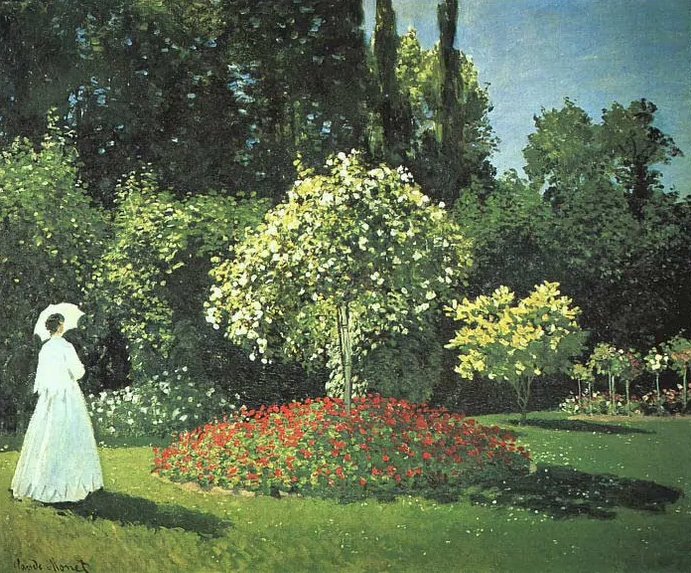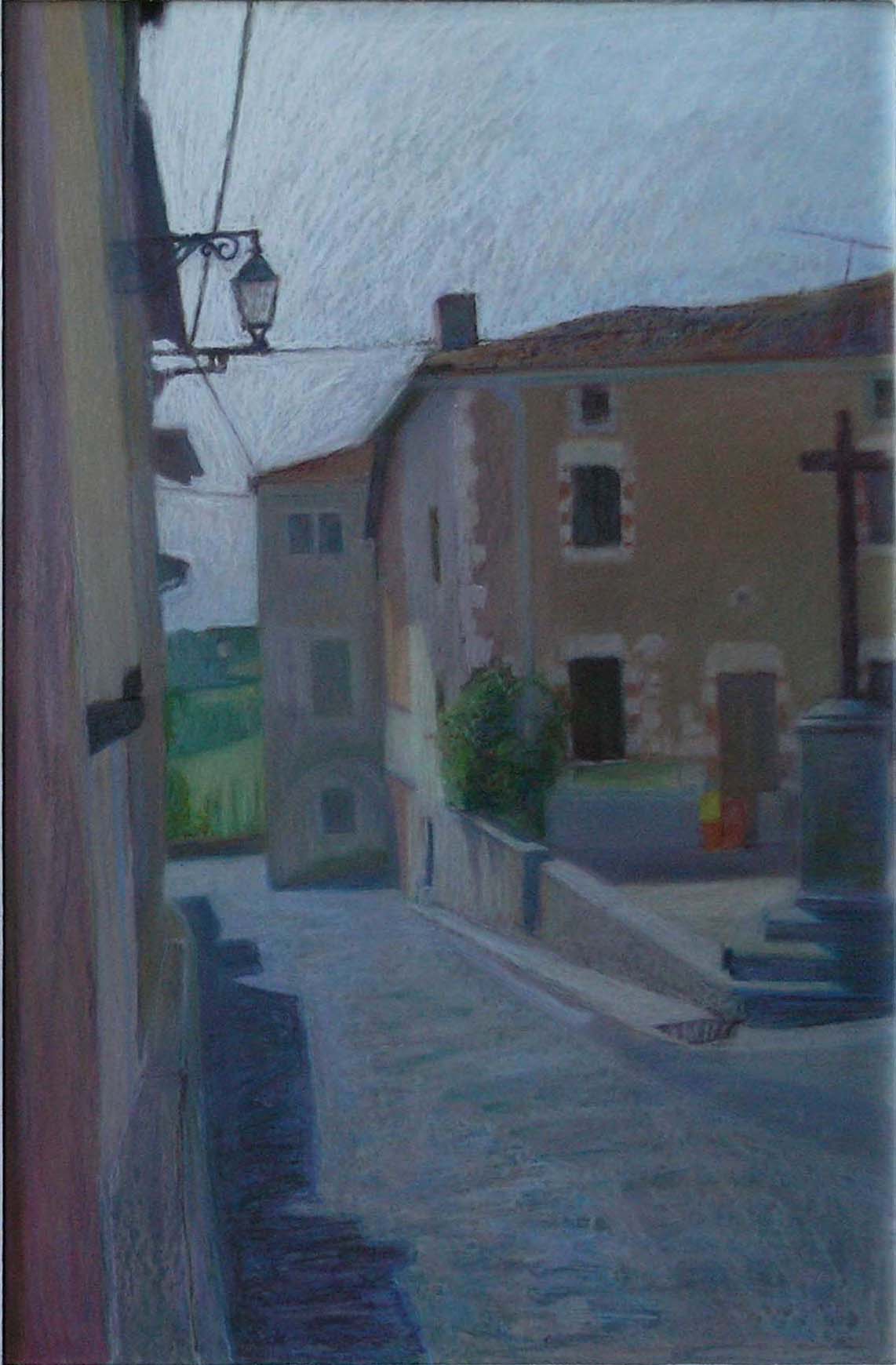The purpose of this POST is both to introduce and provide a link to “Cast Shadows”, Chapter 26 of my book “Painting with Light and Colour”.
A fundamental difference
The book as a whole is full of what both the Impressionists and their academic predecessors called “rules of nature”. However, though referring to the same body of phenomena, these two schools of painting viewed them differently: Whereas the Academies seem to have wanted artists to follow them slavishly, the Impressionists were apt to question their value. For example, a quotation from Claude Monet makes his position clear : “I only know that my aim is to convey what I experience before nature and that most often, in order to succeed… I have to totally forget the most elementary rules of painting, if they exist that is.” Which of the two was right? My answer is “both of them”.
Aerial perspective
One of the reasons for Monet’s irreverent attitude to the rules was almost certainly a result of being faced with consequences of the “constancies”, those brain-created distortions that mean rules concerning “measured reality” far from always correspond to actual experience. However, the particular focus in Chapter 26 is on the rules of “aerial perspective”, which derive from the fact that the depth of atmosphere between the viewer and the object of interest can influence the way we perceive it. More precisely, they state that the deeper the atmospheric screen between the object and our eyes, the more desaturated the colour of objects seen through it .

Oversimplification
However, this rule oversimplifies actual appearances, for in every scene there are a multiplicity of other factors in play, all of which can interfere with it to such an extent that it becomes worse than useless. The only way of finding out the truth in any one situation is to follow Monet’s lead and do your best to find out the actual hue, saturation and lightness relationships in the particular scene you are in the process depicting.
The focus of this chapter
In Chapter 26, the main focus is on one of the multiplicity of “other factors” and the very different rules that apply to it. It relates to our perception of “cast shadows” . What we find is that they regularly influence appearances in ways that run counter to the rules of aerial perspective. As in the previous chapter, an understanding of Mack Bands can help us to discover how and why.
CHAPTER 26-CAST SHADOWS AS BODY COLOUR
![]()

See also the pastel painting of “The esplanade” in the “Introduction to BOOK 2″
![]()
Other Chapters from”Painting with Light and Colour”
- INTRODUCTION to BOOK 1 : “Painting with Light”
- Chapter 1 : The dogmas
- Chapter 2 : Doubts
- Chapter 3 : The nature of painting
- Chapter 4: Renaissance ideas
- Chapter 5 : New Science on offer
- Chapter 6 : Early Modernist Painters
- Chapter 7 : The perception of surface
- Chapter 8 : Seurat and Painting with Light
- Chapter 9 : Seeing Light
- Chapter 10 : Illusory pictorial space and light
- Chapter 11 : Colour mixing – definitions and misconceptions
- Chapter 12: The colour circle: Misunderstandings
- Chapter 13 : Finding a maximum of colours
- Chapter 14 – Colour mixing made easy
- Chapter 15 – Colour mixing by layering
- Chapter 16 – Reviewing previous chapters (1)
- Chapter 17 – Reviewing previous chapters (2)
- Chapter 18 – “All you need to know about painting” – No 2
- INTRODUCTION to BOOK 2: “Painting with Colour”
- Chapter 19 – Colour and the feelings
- Chapter 20 – Optical mixing and its legacy
- Chapter 21 – Colour contrast effects
- Chapter 22 – Thin Lines
- Chapter 23 – More on viewing conditions
- Chapter 24 – Colour and Surface
- Chapter 25 – Chiaroscuro
![]()
Go to top
Go to list of all other contents
![]()
This is a great post Francis on a subject so often overlooked or simplified when trying to paint cast shadows. They are actually fascinating to paint and can make a huge world of difference to the overall feel of a painting. Thank you again for sharing these useful insights!
Thanks for this chapter Francis which is very informative and practically useful, the photographs were particularly helpful. Who would have thought there was so much involved in shadows? I imagine almost everybody who has attempted to draw or paint a window looking out against the bright sky will have encountered the difficulties you describe and will have had to make their own compromise, so that might not be ‘news’, but how artists make these decisions is very illuminating and you explore that really well. Further, even with 35 years of painting experience behind me, I learnt things from this chapter. Thank you